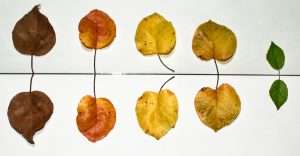 0
0

Types of Obsessions and Compulsions in OCD: Explained
Singapore
Jun 3 2023
Obsessive Compulsive Disorder (OCD) is a prevalent mental health condition that afflicts a substantial number of individuals globally. It is distinguished by the presence of persistent thoughts, commonly known as obsessions, and repetitive actions, referred to as compulsions, which can have a profound impact on one’s daily functioning. In this article, we will explore the various types of obsessions and compulsions commonly experienced by individuals with OCD. By understanding these different manifestations, we aim to explain the diverse nature of OCD symptoms.
Understanding Obsessions in OCD
Obsessions are intrusive and unwanted thoughts, urges, or mental images that individuals with OCD experience. These thoughts are often distressing and cause significant anxiety. Let’s explore some common types of obsessions:
Contamination Obsessions
Contamination obsessions revolve around a fear of germs, dirt, or harmful substances. Individuals with contamination obsessions may be constantly worried about coming into contact with these substances, leading to excessive handwashing, avoiding public places, or feeling the need to clean excessively.
Symmetry and Orderliness Obsessions
Symmetry and orderliness obsessions involve a strong need for things to be arranged in a particular way. Individuals with these obsessions may experience intense discomfort or anxiety when items are not aligned perfectly, or things feel “off balance.” They may engage in repetitive rituals to ensure symmetry or spend excessive time arranging objects.
Forbidden Thoughts or Taboo Obsessions
Forbidden thoughts or taboo obsessions involve intrusive and distressing thoughts that go against an individual’s personal values or moral beliefs. These thoughts can be violent, sexual, or religious in nature. Individuals with these obsessions often experience intense guilt, shame, or fear. They may engage in mental rituals or seek reassurance to counteract these thoughts.
Fear of Harm or Responsibility Obsessions
Fear of harm or responsibility obsessions involve excessive worries about accidentally causing harm to oneself or others. Individuals with these obsessions may constantly doubt their actions and fear the consequences of their behaviour. They may engage in checking rituals or seek reassurance to alleviate their anxiety.
Exploring Compulsions in OCD
Compulsions are repetitive behaviours or mental acts that individuals with OCD engage in to alleviate the anxiety and distress caused by their obsessions. Let’s delve into some common types of compulsions:
Checking Compulsions
Checking compulsions involve repetitive behaviours aimed at ensuring that something negative has not happened or will not happen. For example, an individual may repeatedly check if doors are locked, appliances are turned off, or if they made a mistake in their work. These checking behaviours provide temporary relief from anxiety.
Cleaning and Washing Compulsions
Cleaning and washing compulsions involve excessive cleaning rituals to reduce the perceived risk of contamination. Individuals may engage in prolonged handwashing, excessive use of sanitisers, or repetitive cleaning of personal items and living spaces. These rituals temporarily alleviate anxiety associated with contamination obsessions.
Counting and Ordering Compulsions
Counting and ordering compulsions involve repetitive behaviours aimed at achieving a specific numerical pattern or a sense of symmetry. Individuals with these compulsions may count or arrange objects in a particular order, repeat words or phrases a certain number of times, or engage in ritualistic tapping. These behaviours provide a temporary sense of control and relief from anxiety.
Hoarding Compulsions
Hoarding compulsions involve persistent difficulty discarding or parting with possessions, regardless of their actual value. Individuals with hoarding compulsions experience a strong attachment to their belongings, leading to excessive accumulation of items, cluttered living spaces, and significant distress or functional impairment.
Overlapping and Mixed Presentations
It is important to note that individuals with OCD can experience a combination of different obsessions and compulsions. For instance, someone may have contamination obsessions along with checking and washing compulsions. It is also possible for obsessions and compulsions to change or evolve over time. OCD is a highly individualised disorder, and the specific manifestations can vary from person to person.
In short
Obsessions and compulsions in OCD can take various forms, impacting individuals in unique ways. By understanding the different types of obsessions and compulsions, we gain insight into the diverse nature of OCD symptoms. Remember, seeking professional help is crucial for a proper treatment plan tailored to your specific needs. With appropriate support, individuals with OCD can effectively manage their symptoms and lead fulfilling lives.
Related articles
Debunking Common Myths About OCD: Understanding the Truth
Building Healthy Relationships: Communication and Emotional Intimacy
If you like what you read, follow us on Facebook, Instagram or LinkedIn to get the latest updates.
Have a question? Reach out to us through our contact form or WhatsApp.
Want to speak to our clinicians? Book your appointment here!

Join Our Newsletter
Subscribe to our newsletter and receive daily updates & promotions!






